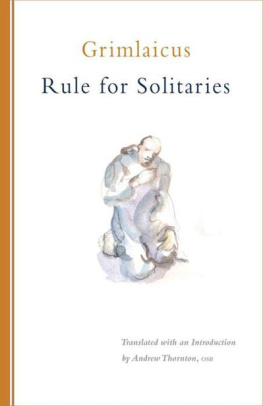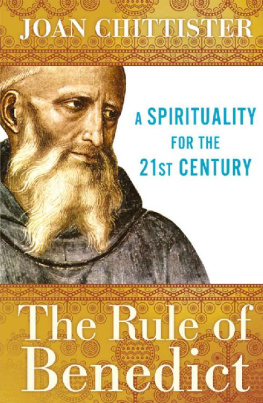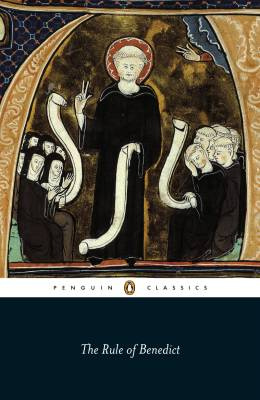CISTERCIAN STUDIES SERIES: NUMBER TWO HUNDRED
Grimlaicus
Rule for Solitaries
CISTERCIAN STUDIES SERIES: NUMBER TWO HUNDRED
Grimlaicus
Rule for Solitaries
Translated with Introduction and Notes by
Andrew Thornton, osb

A Cistercian Publications title published by Liturgical Press
Cistercian Publications
Editorial Offices
Abbey of Gethsemani
3642 Monks Road
Trappist, Kentucky 40051
www.cistercianpublications.org
2011 by Order of Saint Benedict, Collegeville, Minnesota. All rights reserved. No part of this book may be reproduced in any form, by print, microfilm, microfiche, mechanical recording, photocopying, translation, or by any other means, known or yet unknown, for any purpose except brief quotations in reviews, without the previous written permission of Liturgical Press, Saint Johns Abbey, P.O. Box 7500, Collegeville, Minnesota 56321-7500. Printed in the United States of America.

Library of Congress Cataloging-in-Publication Data
Grimlaicus, fl. 900.
[Regula solitariorum. English]
Grimlaicus: rule for solitaries / translated with introduction and notes by Andrew Thorn ton.
p. cm. (Cistercian studies series; 200)
This volume presents the first English translation of the Regula solitariorum of GrimlaicusIntrod.
Includes bibliographical references and indexes.
ISBN 978-0-87907-200-1 ISBN 978-0-87907-830-0 (e-book)
1. Monasticism and religious ordersRules. 2. Cenobites. I. Thornton, Andrew L., 1946 II. Title. III. Title: Rule for solitaries.
BX2436.5.G75E5 2011
255'.0109409021dc22
2010030877
Contents
Abbreviations
| CC | Corpus Christianorum: series latina. Brepols: Turnhout. |
| CCCM | Corpus Christianorum: continuatio mediaevalis. Brepols: Turnhout. |
| Defensor | Defensor Locociagensis monachi Scintillarum Liber. PL 88:597718. See also: Defensoris Locogiacensis monachi Liber Scintillarum, ed. D. Henricus Rochais, O.S.B. CC vol. 117. Turnhout: Brepols, 1957. Since chapter 32 of this critical edition is not in PL, the chapter numbers thereafter are higher by one. |
| Ep(p) | Epistula/ae |
| MGH | Monumenta Germaniae Historica |
| PL | Patrologia Latina, ed. J-P. Migne. |
| RB | The Rule of Saint Benedict |
| SCh | Sources Chrtiennes. Les ditions du Cerf: Paris. |
Introduction
This volume presents the first English translation of the Regula solitariorum of Grimlaicus, the first rule for people who live as cenobitic solitaries, that is, who live enclosed in a solitary area but within the context of a monastic community.
There are a number of reasons for introducing Grimlaicus to those who read English. First, Grimlaicus rule is far more than a list of regulations meant to govern an extreme form of the ascetical life. It contains a balanced theology of the contemplative life and a rationale for living this life in a way that fosters spiritual, psychological, and physical health. Second, Grimlaicus rule is a splendid witness to the vitality of the patristic and monastic tradition between the Carolingian reform and the flowering of Cluniac and Cistercian monasticism. Grimlaicus is thoroughly familiar with the Rule of Saint Benedict and uses it as the foundation for a style of life quite different from that for which the Rule was intended. Third, through the rule of Grimlaicus, we meet its author. He acts as a conduit for a great tradition that reaches back to New Testament times, yet he also intends that readers hear his own voice, the voice of a man conscious of his fallibility yet confident in his authority; moderate and realistic in assessing situations and persons yet uncompromising in his pursuit of ideals; deeply troubled at laxity and abuses yet eager to have others discover the joy he has found.
Because Grimlaicus rule has a clear message framed in straightforward language, it needs no lengthy introduction. Consequently these remarks simply provide some biographical, historical, and literary context.
The Author
In the opening lines of his preface, the author of the Regula solitariorum says that he is writing the rule at the request of one Grimlaicus and that he himself also has that name. Who was this person, and where and when did he live?
Brockie As Gougaud points out, however, the name was a common one.
Brockie thought that Grimlaicus lived at Metz or nearby.
Even though Frank admits that the author has eluded all attempts to identify him, this series of informed guesses leads us to assume that Grimlaicus was a monk who lived around the year 900, very likely at Gorze or, at any rate, in or near Metz.
Enclosed Solitaries before Grimlaicus
In order to appreciate the unique features of Grimlaicus rule, it would be well to get some idea of how solitaries who dwelled within monastic communities lived in late Roman and early medieval times. Against what historical background did Grimlaicus write? What sorts of usages or abuses might his rule have been addressing?
In the West, the first legislation for solitaries who live within a monastery occurs in the acta of the local council of Vannes, which took place between 461 and 491.
The following is to be observed concerning monks: they are not to be permitted to withdraw from the community into solitary cells, except in the case of those who have been proven after prolonged labors or [the case in which], because of the needs imposed by weakness, the rigor of the rule is relaxed by abbots. This is to be done such that they remain within the enclosure of the monastery yet are permitted to have separate cells under the abbots authority.
This very early legislation contains some elements that will be prominent in Grimlaicus rule: only after prolonged testing are monks allowed to live as solitaries; even then the cells are to be inside the enclosure, and the enclosed monks are to remain under the abbots authority. Yet the legislation of Vannes does not seem to be addressing precisely the sort of life later envisaged by Grimlaicus. There is no mention of permanent reclusion or of the cells being sealed. If there were arrangements for food and access to the Divine Office and Mass, they are not mentioned. In fact, the council recognizes that certain monks who may dwell in solitary cells are those for whom the strictness of the common rule has to be mitigated.
The works of Gregory of Tours, who wrote a century after the Council of Vannes, fairly burst with solitaries. Gregory was writing about the Merovingian domain, chiefly Tours and its environs, in the latter half of the sixth century. Even at several centuries remove, the glimpses he gives of solitaries, especially those who lived in the midst of monastic groups, can perhaps give some idea of the background against which Grimlaicus, shortly after the year 900, formulated his rule. In Gregorys accounts, we can at least sense some of the excesses and problems with which Grimlaicus had to deal.
There is Leobard, who took up residence in a solitary cell in the monastery of Saint Majorus near Tours. As his work, he prepares vellum for writing. He memorizes the Psalms, the better to understand the Scriptures. Leobards conduct in his cell epitomizes the solitarys ideal: He delighted in fasts, in prayer, in saying the Psalms, and in reading. He never stopped praying the divine offices and private prayer. Sometimes he wrote, to keep himself from indulging in harmful thoughts.









